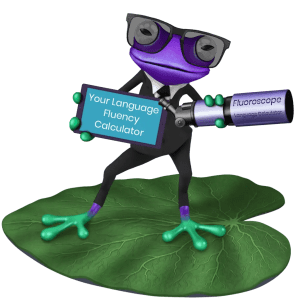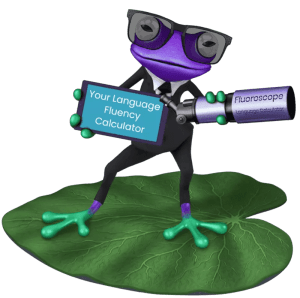How Long Will it Take to Learn the English Language?
A realistic approach to learning something new.

The world of language learning can be an exciting and rewarding place. Imagine you have a whole other culture inside your mind, and you can “switch it on” at the drop of a hat. Language learning is taught worldwide in classrooms, and how to learn English fast has become a top priority for many students. We live in an age of globalization, where we can communicate with other people from around the world instantly. More and more people are seeking to work and live abroad, with an estimated 9 million Americans living internationally at the time of writing this. This global era has fed a growing interest in language learning, with more people seeking user-friendly resources than ever before.
However, this is where many language students can hit a wall. Online spaces are flooded with English learning tips for beginners promising “passive, fast, and easy”. Users are sold the idea that if they spend 15-20 minutes a day learning vocabulary, they will eventually become fluent in a language. While these apps are useful for learning the basics, research has shown that an app alone cannot provide fluency. Language learning is much more complex than that. Of course, these apps can provide valuable information, but this must be paired with a wide range of supplementary actions.
The truth is, learning English can only ever be accomplished with a wide range of English learning tips and tricks. If you are putting in the time, you will reap the rewards. In order to get the most out of the resources you are using, you need to be practical. This is where our 4 key modules (APEC) come in:
- Aspiration
- Planning
- Execution
- Commitment
By using this system, you can find your motivation and put it to good use. In this blog, we will define each module, and give you an attainable method to follow. This will ensure the hours you spend on learning apps, is time well spent.

Aspiration
Outline Pros and Cons: For the first step in our system, you will need to find motivation! Every major achievement was once just an idea. But with enough excitement, it can become more than that. It’s important for you to first identify the “why” of your learning process. Is this new language something that makes you excited? Or is it just another string to add to your bow? In order to build a strong foundation for learning English, you will need to be honest with yourself and write down all the pros and cons of learning this language. Be practical with yourself to decide whether it is worth the time and money spent along the way.
Refer back to your “Gains”: This isn’t only something you will do in the beginning. You will need to do this many times until it becomes second nature. You might become disheartened along the way, whether it be because of a lack of focus or a lack of time. Make a detailed list of all the positive changes that will come to your life when you achieve fluency, and when the going gets tough, you can use it as a source of inspiration. It’s important to be able to remind yourself time-and-time-again why you started.
Ask Yourself Big Questions: If you are having trouble defining this “why”. Ask yourself where you would use this language. Will this help you in your personal life? Is there someone you wish you could communicate within your social circles? Maybe there’s a job in another country you would love. Or maybe you just find the language beautiful, and that’s all the motivation you need. Whatever the reason, make sure it’s a good one, because you’re going to need that motivation.
These are just a few of the many ways you can get excited about learning a new language. You may also find many of your own personal aspiration methods along the way. The beauty of inspiration is that it finds us in unexpected ways.
Planning
Create a Vision Board: Doing something you’ve never done before takes a detailed, thorough plan of action. Especially when it involves a large commitment of time and energy. The best way to go about this is by creating a “language vision board” somewhere in your house. Separate the board into the days of the week, and give each day a task. In order to keep you interested, try switching things up for a few days. For instance, if you spend an hour every evening at 7 pm Monday to Friday learning vocabulary and grammar, substitute a more relaxed learning practice for weekends. This can be something fun like watching a movie with foreign subtitles or reading a favourite book or blog.
Use Organizational Apps: The vision board method can be used with habit apps as well! Just set reminders on your calendar to notify yourself daily. This method is useful for people who respond less to visual cues and just want a simple reminder. You can also download apps that ask you to check in daily if you need an extra push to get started.
Enlist a Friend: Involve someone else in your planning! If you can, try and find a study buddy who will join you on your learning journey. Check-in with each other often and plan learning sessions together. This will be invaluable for practising communication later down the line as well. If you can’t find someone to read with, try using the Read with Lilly function in LillyPad. Lilly is an easy tool to use to replicate the experience of a reading buddy. You can import any reading material you like and have her read it to you. Tools like this make the planning process a lot more easy and interactive.
Planning ahead will ensure you wake up every day with a purpose for learning. It will be something that holds you accountable. It will also make your time purposeful and more efficient overall.
Execution
Don’t Look for Shortcuts: Now you have your foundations for success laid out. You know you want to learn the language, and you know when and how you’re going to do it. But this is where a lot of learning dives off the deep end. Many people who aspire to learn a new language will look for shortcuts. Students will rely solely on language learning apps with hefty promises like “fluency in a month!”. This is simply not the case. While language apps serve a vital purpose in keeping us on track and providing material, they cannot speed up the learning process. This is how learning English fast becomes an unattainable goal.
Get Practicing: The truth is, it’s going to take you time to learn an entire language. You must accept this early on to avoid disappointment later down the line. Many students will spend a year learning 5 minute vocabulary on their phone and feel they barely know anything. But we can turn our luck around by turning that 5 minutes into 45 minutes – every day. Aside from the most obvious executive function – making time – we must also make room for a few more supplements:
Diversify your resources: (books, social media, apps, movies, radio, music)
- Study the essentials first (learn what you will use the most)
- Read and write as much as you can
- Invest time in online classes or tutorials
These are just a few of the many building blocks you can use when planning an engaging learning environment. Execution is only as good as its resources. Make sure you have created a vibrant learning environment that challenges you in unique ways every single day.
Commitment
Start Today: Of course, all of this is wasted time if you are not willing to make the daily choice to begin. Many students spend hours learning languages in school, only to forget them in the forthcoming years. This learning loss can be experienced with adult students as well. We may put many hours into something, but without the commitment and followthrough, it’s just another fleeting hobby. The only way we can override this desire to unlearn is to begin learning as soon as possible.
APEC: This is why it’s important to have the tools of Aspiration, Planning, and Execution. Without these outlined from the start, it can be hard to maintain the drive for a long-term goal. You have to want to learn, outline when you will learn, and plan how you will learn. You and you alone will be the one to make this happen. Once you have these 3 methods outlined, it will be much easier to commit.
Define a Timeline: The greatest commitment of all is that of time. It can feel like a colossal project of learning without any end in sight. This is why at LillyPad we have developed The Fluoroscope. This calculator enables you to forecast the realistic amount of time that it might take for you to achieve your fluency goals. It does this by asking you how proficient you are, how much time you have to spare, and what fluency level you want to achieve.

Where Do I Start?
After using our Fluoroscope calculator, you will have a realistic understanding of how long it will take you to learn the English language.
Frequently Asked Questions
In general, it is believed that adults have a more difficult time learning new languages than children, as they are less likely to be exposed to the language on a regular basis and may have already developed set patterns of speech. However, there are a number of factors that can affect how quickly an adult learns a new language, such as previous exposure to the language, motivation for learning, and the method of instruction. As such, it is difficult to estimate how long it would take the average adult to learn a new language.
The simple answer to this question is that it depends on a variety of factors, including the individual’s age, motivation, and prior experience with learning languages. However, there is some general consensus among experts that complete immersion is the most efficient way to learn a new language. This is because immersion forces learners to use the language constantly, providing them with ample opportunity to practice and make mistakes.
This estimate comes from the work of psychologist K. Anders Ericsson, who found that expert performers in a variety of fields – from music to sports – tend to have put in around 10,000 hours of deliberate practice. Based on this research, it stands to reason that it would take a similar amount of time to master a language.
The amount of time it takes to achieve fluency depends on a variety of factors, including the learner’s age, motivation, and prior exposure to the language. For example, a young child who is raised in a bilingual household will typically learn both languages more quickly than an adult who is starting from scratch. Similarly, someone who is highly motivated to learn a new language for work or travel purposes will usually progress faster than someone who is studying for purely academic reasons.
The first is the level of difficulty of the language. Some languages, such as Spanish and French, share similarities with English and are therefore easier to learn. Other languages, such as Mandarin Chinese and Arabic, are more structurally different from English and can take longer to master. The second factor is the amount of exposure the learner has to the language. Those who are immersion in an environment where the target language is spoken will learn more quickly than those who only have sporadic exposure.
Simply put, fluency is the ability to read a text accurately, quickly, and with proper expression. However, there is more to fluency than just being able to read quickly. In order to be truly fluent, readers must also be able to comprehend what they are reading. This means being able to identify the main ideas of a text, as well as draw inferences and make connections between the text and their own prior knowledge.
Most experts agree that it generally takes about 600 hours of instruction to reach basic proficiency in a new language. However, this is just a rough estimate, and some learners may progress more quickly while others may need more time.
For example, learners who already have some knowledge of the target language may be able to progress more quickly than those starting from scratch. In addition, highly motivated learners who are able to dedicate several hours per day to studying may also learn more quickly than those with less time to devote to their studies.
Learn from History – Follow the Science – Listen to the Experts
What’s the one thing that makes LillyPad so special? Lilly! She is an Artificial Intelligent English tutor, and has people talking all over the world! Lilly makes improving your English easy. With Lilly, you can read in four different ways, and you can read just about anything you love. And learning with Lilly, well that’s what you call liberating!
For learners of all ages striving to improve their English, LillyPad combines the most scientifically studied and recommended path to achieving English fluency and proficiency with today’s most brilliant technologies!
Additionally, the platform incorporates goal-setting capabilities, essential tracking & reporting, gamification, anywhere-anytime convenience.
At LillyPad, everything we do is focused on delivering a personalized journey that is meaningful and life-changing for our members. LillyPad isn’t just the next chapter in English learning…
…it’s a whole new story!
Do you want to improve your English? Visit www.lillypad.ai.
Follow us on Facebook or Instagram!
Note: iOS is currently unavailable.
Bethany MacDonald
Bethany MacDonald has contributed articles LillyPad.ai since 2020. As their Blog Lead, she specialises in informative pieces on culture, education, and language learning










